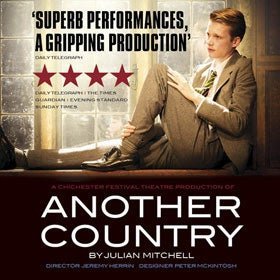

As a White European woman, there are subtleties connected with racism that I would never get. All the discussions it must have caused when it was published, are quite present in the society of today.įor that reason I highly recommend “Another Country”. This book is still quite present in the (awful) year 2020 when I am writing this review. And in some other parts, they are not tolerated at all but even prosecuted as crimes. In some other parts of the world are tolerated (although in my opinion only “in the surface”). Unfortunately, most of them are treated the same way in the 21st century, and not only in the United States.

The text shows us how these topics were treated in the United States in the 1950s. “Another Country” addresses such important and up-to-date topics such as racism, inter-racial marriages, homosexuality and bi-sexuality. Even more, I want to continue knowing about them. They are all explained with such a precision and such amount of details, that when I finished the book, it seemed as if I personally knew all the characters. “Another Country” shows all the possible complexities and different aspects of these interpersonal relationships.

And, of course, that friendly connection between Rufus and Vivaldo, behind which we could sense something else… We see relationships of power between Rufus and Eric, as well as between Ida, Vivaldo and the producer Steve Ellis pitiful associations between Cass, Richard and Eric.
#Importance of another country by james baldwin how to
The whole book is a masterpiece that shows us how to play with the different interpersonal relationships of the whole cast of characters (primaries as well as secondaries). His arrival dusts off old sufferings and painful memories… INTERPERSONAL RELATIONS When the book starts, he is in France with his boyfriend Yves, but travels later alone to New York to play in the theatre. We also read about Eric, the former “friend” of Rufus. We learn about the situation of Black people in the 50s in America how White people saw interracial couples, and Blacks too how people treated gays at that time we learn about infidelity, envy, lost opportunities, pain, suffering…īaldwin also serves us with a group of very interesting secondary characters like Cass & Richard, a couple who are friends with Rufus and Vivaldo, and who are suffering their own decline. This is the central action of the book, but it is much more than this. However, unfortunately, they find Rufus’ body in the waters of the river. She manages to find Rufus’ best friend Vivaldo and tries to find what has happened to Rufus. In comes Rufus’ sister, Ida, who travels to New York looking for his brother after she cannot contact him. Very soon in the story, we know that he commits suicide although we do not know exactly why. THE STORYīaldwin tells us the story of Rufus, a Black musician who lives in New York in the 1950s. I have discovered a writer with such a mastery of language, such use of words, such lyricism and poetry in his sentences, that I cannot wait to read the rest of his books. I know that this book is fiction, and that one of the best ways to educate ourselves about racism is to read non-fiction books…but this was the book I had available. But because of the Black Lives Matter movement, I decided that June 2020 would be the perfect time to read it. “Another Country” had been sitting in my shelves for too long. James Baldwin is one of those authors I have always wanted to read but for whom, for one reason or another, I never find the time. Self-destructive, bad and brilliant, he draws us into a bohemian underworld pulsing with heat, music and sex, where desperate and dangerous characters betray, love and test each other to the limit. This mastery story of desire, hatred and violence opens with the unforgettable character of Rufus Scott, a scavenging Harlem Jazz musician adrift in New York. When Another Country appeared in 1962 it caused a literary sensation: among the storm of reviews the Sunday Times said: “Let our novelists read Mr Baldwin and tremble. Weak Point: I simply have not found any so far… Strong Point: The description of the 50s American underground music scene and of the different types who formed part of it. Year of Publication: 2001 (first published in 1962).


 0 kommentar(er)
0 kommentar(er)
